Just like "Cowboys & Aliens" was not the first western movie ever made, UFO encounters did not begin with the alleged Roswell UFO crash in 1947.
In fact, there were hundreds of reported sightings of UFOs and extraterrestrials between 1840 and 1900, according to Noe Torres, a librarian in South Texas, and John LeMay, a historical archivist in Roswell, N.M.
The two have documented 14 of those sightings in a new book, "The Real Cowboys & Aliens: UFO Encounters of the Old West," which Torres published via his own company, Roswell Books, which specializes in paranormal literature.
The book analyzes UFO reports that took place in America between 1840 and 1900, the period when "Cowboys & Aliens" is set, and contrary to what the characters played by Harrison Ford and Daniel Craig think of the creatures -- they call them "demons" -- LeMay said the idea that Earth could be visited by people from other planets wasn't an alien concept.
He points to an alleged UFO crash that occurred near Aurora, Texas, in 1897.
"The newspaper report in the Dallas Morning News didn't call them 'aliens' but they did call them 'Martians,' mainly because, at the time, that was thought to be the planet most likely to be inhabitable," LeMay said.
Unlike today, where sightings of spacecraft or aliens are discounted by a skeptical mainstream media, Torres said major newspapers and magazines of the day, such as the Dallas Morning News, Kansas City Star and the San Francisco Call reported these sightings at face value.
Even the venerable New York Times found an 1873 sighting of a flying serpent UFO fit to print.
What the authors found most interesting was how the eyewitnesses described what they saw.
"This was an era before airplanes were invented and balloon travel had just started," Torres said. "So the terms used to describe what was seen is very interesting. You'll get descriptions of flying serpents, metallic balloons and one person even described a spaceship as a 'huge bale of cotton on fire.'"
Although that terminology sounds quaint to modern sensibilities, LeMay thinks those descriptions make them, in some ways, more valid than contemporary reports.
"They are more credible because they didn't have any knowledge of airplanes or satellites," he said, adding that his favorite description of an alien spaceship was from an underwater UFO found in a Washington lake.
"The witnesses described it as a mechanical caterpillar," he said.
Another thing the authors discovered was the willingness of journalists to report the sightings and refrain from making the witnesses seem like wackos.
"The papers were more inclined to cover these sightings without trying to make the witnesses sound crazy," Torres said. "Of course, many of the descriptions tended to use religious or spiritual descriptions and the journalists of that era were more open to that."
The most compelling case of that time in America, according to Torres, is the Aurora incident of 1897, when a craft reportedly piloted by a humanoid alien crashed, killing its pilot in the process.
"Newspaper descriptions of the case -- which was reported nationally -- made the point to mention that eyewitnesses could tell the pilot 'was not of this world.'" Torres said. "Along with the pilot, they found a strange script featuring unknown hieroglyphics."
Another case of interest to Torres was the sighting of some Bigfoot-like aliens by Native Americans in northern California.
"The Native Americans called them 'crazy bears' and they reportedly came to Earth in 'small moons that descended to Earth,'" Torres said. "They were apparently friendly and furry."
In fact, that sort of neighborly spirit is what sets apart the E.T. encounters of the mid-to-late 1880s with modern-day sightings.
"There were no abductions reported, but there was one case when the E.T.s supposedly tried to coerce humans into a ship, but the humans said no," Torres said.
Torres hasn't seen "Cowboys & Aliens," but believes the truth is always more interesting than fiction. However, he admits that the stories in his book "aren't as dramatic as laser beams or abductions."
LeMay has seen the film, and while its depiction of aliens battling cowboys has little to do with the E.T. reports of that time, he accepts that Hollywood tends to take liberties with the historical record -- even when aliens aren't involved.
"It could have been better," he said. "It was solid filmmaking, but I don't need to see it again a lot of times."
However, at least one UFO researcher thinks the film's so-called "inaccuracies" could have a devastating impact on future Earth-E.T. relations.
Alfred Webre is a researcher in Vancouver, B.C., who specializes in "exopolitics," a term used to describe the political implications surrounding an extraterrestrial presence on Earth.
He said the film is a $163 million travesty that inaccurately depicts how aliens and humans really interacted during the 1870s.
"There is no evidence of harmful alien abductions during that period," Webre griped to HuffPost Weird News. "That didn't start until 1934 when the U.S. government, on FDR's watch, signed a treaty with the Orion Gray aliens. Then there was a parallel treaty made with the Third Reich in 1941."
"Also, the movie shows the aliens looking for gold. The only aliens interested in gold are the Anunnaki, an alien race from the Sirius system that appeared in ancient Sumeria," he added.
That's a bold and outrageous statement, but nothing new for Webre, who once told this reporter that a relative of President Franklin D. Roosevelt
who once told this reporter that President Dwight D. Eisenhower's great-granddaughter was invited to visit a secret U.S. base on Mars and that the U.S. government may have used an earthquake machine to cause the 2010 Haiti earthquake in order to destabilize the country long enough to take over its valuable natural resources.
Still, Webre insists that the way "Cowboys & Aliens" mixes and mashes alleged alien info is not only inaccurate, but it sends a bad message to any E.T.s who might be considering making contact.
"Films like this send out the signal that aliens are our enemies and that we're trigger happy," Webre said.
